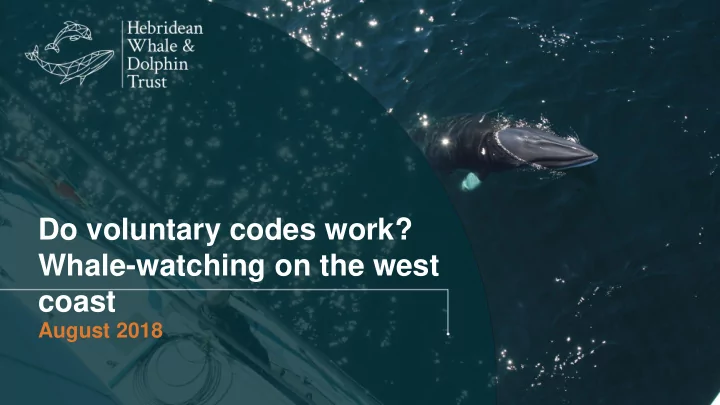

Do voluntary codes work? Whale-watching on the west coast August 2018
Hebridean Whale & Dolphin Trust 16 continuous years of boat-based survey effort 120,000 km surveyed 30,000 animals recorded Contributed to the identification and designation of MPAs
Hebridean Whale & Dolphin Trust 500 volunteers, 3000 sightings of 20,000 animals 3,000 school children inspired to love their local seas 15,000 visitors each year 27 wildlife operators trained since 2015
Brief history of whale-watching First company in the UK was based in Dervaig, Isle of Mull in 1989 Still going strong today “Sea Life Surveys” Strong research focus gave rise to HWDT
Hebridean Diversity: Large area over which animals are present and activities take place
Hebridean Diversity: Large area over which animals are present and activities take place Numerous target species
Hebridean Diversity: Large area over which animals are present and activities take place Numerous target species A broad spectrum of operations
Marine wildlife watching codes 59% follow a wildlife watching code. 50% of operators are accredited by at least one scheme. Decline in adherence to codes of conduct from 89% (2000) to 54% (2015).
Marine wildlife watching codes Wide promotion of a voluntary code Provision of regionally specific training courses Wildlife reporting schemes support involvement
Case study: Hebrides Cruises Employ a seasonal wildlife guide Submit sightings data Wise accredited
Marine Protected Areas Potential ‘honeypot’ effect An opportunity for Scotland to set the gold standard Can an MPA provide an opportunity to bring this all together?
Recommend
More recommend